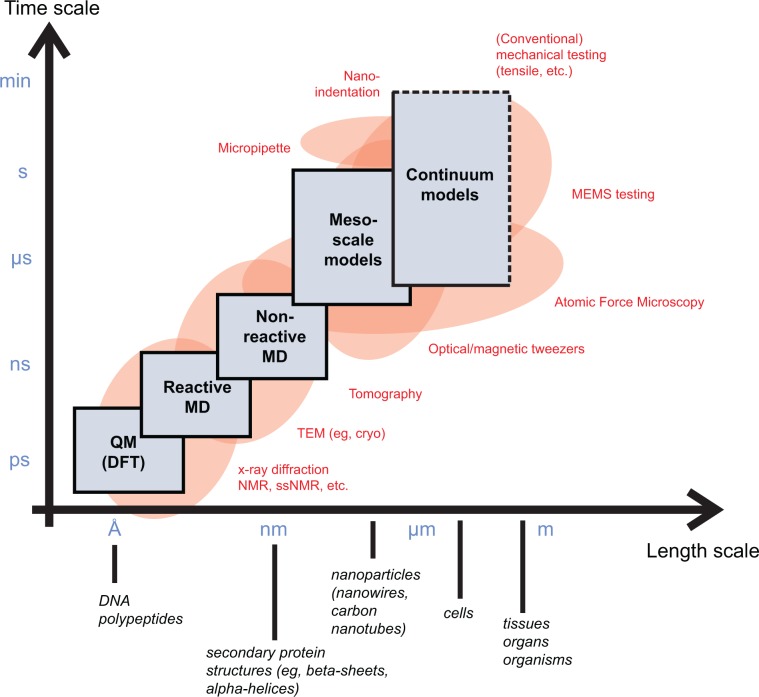Figure 9.
Overview of computational and experimental methods for materiomic investigations, in particular enabling a multiscale perspective of structures, mechanisms, and properties. Hierarchical coupling of different computational tools can be used to traverse throughout a wide range of length and timescales. Such methods enable one to provide fundamental insight into deformation and fracture phenomena, across various time and length scales. Handshaking between different methods enables one to transport information from one scale to another. Eventually, results of atomistic, molecular, or mesoscale simulation may feed into constitutive equations or continuum models. Experimental techniques, such as the AFM, molecular force spectroscopy, nanoindentation, or magnetic/optical tweezers, now overlap into atomistic and molecular approaches, enabling direct comparison of experiment and simulation. Techniques such as X-ray diffraction, infrared spectroscopy, or NMR provide atomic-scale resolution information about the 3-D structure of protein molecules and protein assemblies. Copyright © 2010. Nature Publishing Group, a division of Macmillan Publishers Limited. Adapted with permission from Buehler MJ, Yung YC. Deformation and failure of protein materials in physiologically extreme conditions and disease. Nat Mater. 2009;8(3):175–188.2

